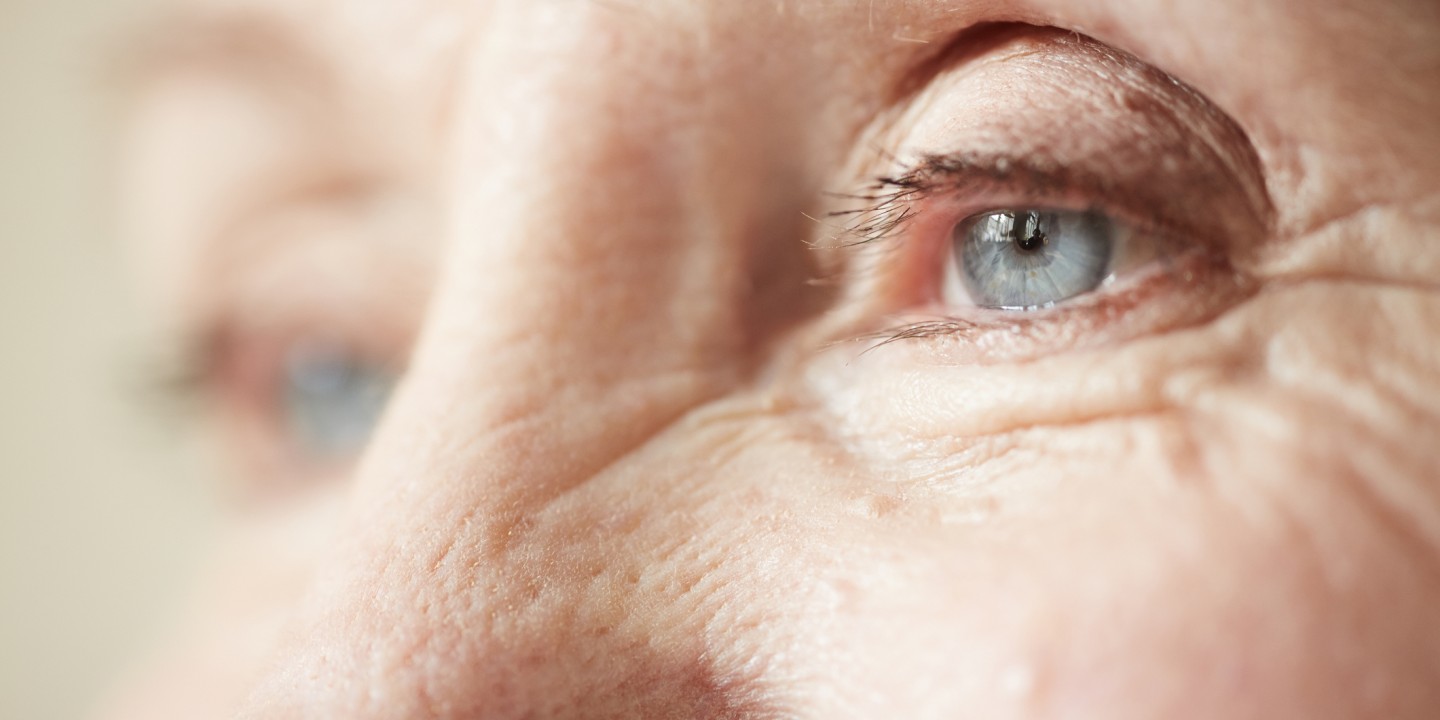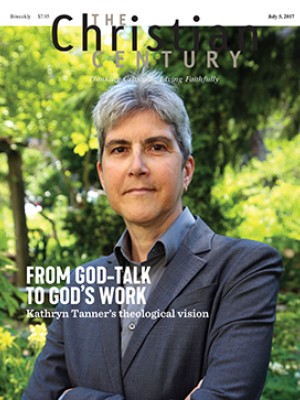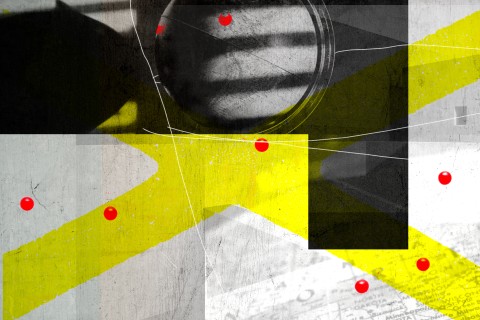What does Christian vocation look like for the elderly?
God calls us to serve the world with our bodies—even when those bodies are failing.

God invites us to participate in God’s life in all the ages and conditions in which we live, from the days of youth “even to old age and gray hairs” (Ps. 71:18). But what does vocation look like for older adults as increasingly the body wears out, the mind may show evidence of less clarity, and the focus is less on activity than at other times of life? Older adulthood—characterized by a chronological age beyond 75 or 80 years—is often marked by the loss of family and friends to death, the loss of physical capacities, and the loss of independence. John’s Gospel captures these experiences: “Very truly, I tell you, when you were younger, you used to fasten your own belt and to go wherever you wished. But when you grow old, you will stretch out your hands, and someone else will fasten a belt around you and take you where you do not wish to go” (John 21:18).
If vocation is about God’s call to persons (and communities) claiming us across the whole of our lives, surely God calls older adults to vocations of service and love too. But life and vocation in older adulthood are distinctive.
Before his death at age 91, psychologist Erik Erikson jotted down notes for a revision of his book The Life Cycle Completed. In that book he had named eight chronological stages of human development, each accompanied by a developmental task. For example, infants struggle to trust the world, and young adults struggle to find intimacy.
Read our latest issue or browse back issues.
The psychologist now identified a ninth stage. “Old age in one’s eighties and nineties brings with it new demands, reevaluations, and daily difficulties,” wrote Erikson’s wife, Joan, in applying her husband’s notes. “Despair, which haunts the eighth stage, is a close companion in the ninth because it is almost impossible to know what emergencies and losses of physical ability are imminent.” The ninth stage, Erikson suggested, involves an integrative review of the previous eight stages through the lens of the challenges of older adulthood.
Erikson had described the eighth stage as the struggle between integrity and “despair and disgust,” with wisdom being the virtue that emerges from the struggle. But, as Joan Erikson wrote,
In one’s eighties and nineties one may no longer have the luxury of such retrospective despair. Loss of capacities and disintegration may demand almost all of one’s attention. One’s focus may become thoroughly circumscribed by concerns of daily functioning so that it is enough just to get through a day intact, however satisfied or dissatisfied one feels about one’s previous life history.
Indeed, in older adulthood, bodies demand primacy of place in determining everyday realities and are often experienced as limiting factors.
Perhaps at no other life stage except adolescence does the body occupy such a premier place in defining the contours of life. But unlike adolescence, in which bodies pulse with energy and vitality, the bodies of older adults generally speak the language of decline, leaning toward diminishment and death rather than growth. Skin thins, dries, and loses elasticity, and in combination with decreasing muscle tone, forms deep, crevasse-like wrinkles and sagging. Hearing and visual acuity diminish. Movement slows and becomes more difficult. Incontinence of bladder or bowels brings indignities. The so-called diseases of old age speed up the body’s distress.
The fact that such bodily changes force others to peer into the horizon of mortality may account for some of the repulsion expressed in social norms demanding that old women cover their flesh. Just as once fecund bodies signified vitality in the exposure of their flesh, now in old age weakened, drooping flesh signifies a mortality from which many recoil in horror. Coming to terms with physical decay, letting go of attachments to culturally formed notions of physical beauty, grieving the body’s losses of function, and learning how to die are central tasks of vocation in this life stage.
Not all the body-centered experiences of older adulthood are about decline and decay, however. Witness the delight and beauty of the great-grandfather who sees in his four-year-old great-grandson the outline of his own features. The great-grandfather permits this little one who is his physical legacy to try to “rub out the wrinkles” on his hands and forehead, as the child-sized hands of the great-grandson explore the wizened flesh of his grandfather’s neck in an unknowing glimpse of his own future appearance. Or picture the couple living together in a long-term care facility, twin hospital beds pulled together so that each night he can lovingly spread lotion to bring comfort to the now-fragile body of his beloved as he has across the many decades of their life together. These too are experiences of the centrality of bodies in older adulthood.
Older adults’ amplified awareness of bodies, their limits and possibilities, underscores God’s creation of human beings for vocation as the embodied creatures we are. Even when aging bodies seem to offer more hindrances than aid to our participation in God’s reconciling love, in this life we do not have the option for ad extra vocation, the living out of God’s calling beyond the body. The life stage of older adulthood calls forth the necessity of honoring our bodies even as our bodies evidence our mortality. Christians have not always been comfortable with the idea that God’s call for us to receive others in relationship takes place in and through our bodies. Bodies matter in God’s call and in our responses—a facet of vocation that older adulthood brings to the foreground.
The heightened body consciousness of older adulthood critiques the cultural overvaluing of independence and autonomy. Chaplain Beth Jackson-Jordan recounts the story of a frail elderly woman confined to her bed in a nursing home, who found purpose and meaning in being a good listener to nurses’ aides, housekeepers, and others who moved in and out of her room each day to provide care. Disrupting the dichotomy between dependence and independence, this bedridden woman replaced it with an interdependence that does not rely on equality of physical capacity. God’s call in older adulthood invites even those with frail bodies and minds to serve the neighbor, as caregiver and care-receiver are graced by one another’s presence.
In older adulthood, time takes on new meanings. A deeper awareness of now and its urgency can lead to a new embrace of life and a revaluing of the present moment. Or it can lead to denial, a refusal to acknowledge the shorting of time and the waning of opportunities to live now. Dis-identification with old age can take highly problematic forms, as is the case with my father who needs help in his daily living activities to be safe, but nevertheless clings fiercely to the illusion of self-sufficiency and independence in ways that create risks. Because he is unwilling to release the burden of a now impossible independence for the grace of interdependence, his struggles with physical and cognitive challenges take away from his ability to fully enjoy relationships and activities that are in his life.
Another change in time’s meaning during older adulthood involves slowness. Time slows, as do bodies. Injuries heal more slowly. Bodies move more slowly through space. Awareness of the danger of falls that bring serious injury, coupled with changes in posture, gait, muscle mass, and stamina, discourage quick motion. Speech also slows in older adulthood, partially the product of changes in the physiology of vocal sound production, but often also the result of cognitive deficits that slow the pathway from thought to speaking. The slowing of time and of bodies moving through time is for some people one of the awakening tasks in this life stage. For others, it is an ending task, the prolegomenon to death.
Slowness in older adults can be a source of frustration to caregivers, younger spouses, children, and even pastors with busy schedules. It can be hard to see vocation in the slowness. Visiting an older adult with dementia may involve me in simply sitting with (or pacing with) that person over a generous expanse of time in which linguistic communication is completely absent. The only thing that “happens” (if such a word even fits) is time shared in the presence of God and one another. Such times may or may not be contemplative, but they will surely be formative of the one who inhabits this slow time with the older adult. Practical theologian John Swinton writes in Dementia: “To love one another, we need to be present for one another. To be present, we need to learn to remember well and to use time differently and more faithfully. . . . We will discover that being with another is the most powerful way of ministering.”
In my ministry with older adults, I have come to embrace the grace in this necessary slowing down in order to be with them. I have to be willing to linger. It takes time to nurture these relationships, to connect across the years of different life stages, to become present to one another, and to hear the stories that narrate long lives. This story about time differs from the usual stories I tell myself from the vantage point of parenting and work, where time is framed in terms of organization (“How am I going to fit into my packed schedule the need to drive three children to different after-school activities today?”), efficiency, and productivity. I carefully choose how I will “spend” my time; I value devices and technologies that allow me to “save” time. But with older adults, time becomes re-storied, transformed from a commodity to be spent or saved to a space of grace where relationships unfold.
When I visit older adults, I experience the gift of time. It so profoundly reshapes my life that I have come to think of the vocation of older adults (especially those with Alzheimer’s and other forms of dementia) as offering time-gifts to people who need to slow down. In this way, the callings of the ones receiving care are inextricably linked to the callings of the ones giving care. This dialectic is central in the vocation of older adulthood, where receiving becomes the more visible element in daily life, but where giving takes place in unobserved ways.
Those in the initial phases of older adulthood often note that the deaths of friends and loved ones become less exceptional and more the norm. There are losses of place, as desires to be near family or a change in health status necessitate relocation. There are losses of function, as elderly persons find themselves unable to perform some activity or task that used to be second nature to them. Some speak of the loss of dignity in the way health care is delivered or in the diminished privacy around personal finances.
As loss becomes cumulative and social supports diminish, older adults may experience the general loneliness of having too few companions. Retirement and its aftermath may awaken relational emptiness, a state particularly common among men in late adulthood who were socialized to form relationships around work roles. This sense of emptiness may turn to isolation when the crisis of giving up driving or needing assistive devices to walk or hear limits the ability to independently seek out companionship. Another form of loneliness in older adulthood is that which overtakes a person after the death of a spouse or partner. The specificity of spousal loss cannot be ameliorated by adding new friends or companions, as if the loneliness were generic. But a person suffering such loss can be aided by support and friendship. Older adults who have extensive social support suffer less from depression.
If we understand vocation not as a possession, but rather as an interaction with God’s purposes that takes place within a relational ecology, then it seems possible to imagine loneliness in older adulthood evoking the community’s capacities to provide a web of relationships in which older adults can grieve well. In turn, older adults suffering losses in the midst of the community “teach us how to grow through losses instead of being defeated by them,” as Paul J. Wadell wrote in the Century (“The call goes on: Discipleship and aging,” April 19, 2011).
The call of individuals and communities overlaps so that the circumstances of one are addressed in the vocation of the other. Similar to Erik Erikson’s cogwheel theory of human development, in which the gifts of one stage of life intersect with the needs of another, an ecological understanding of vocation leaves room for the possibility that the needs of some parts of the community to receive care may activate giving on the part of others called to offer care.
God’s calling within older adulthood’s limits, especially under conditions of disability, redefines usefulness and value in human life. Being useful for God’s purposes might be best understood not in what a person herself can do, but instead through the power of her circumstances to evoke empathy, compassion, care, and attention among those in relationship with her as caregivers, family, faith community, and friends. Older adults may call forth in others untested capacities of loyalty, commitment, justice, and love.
Put differently, God’s call in older adulthood sometimes takes place in a receptive-dependent mode, a vocation of forming others in faith by evoking in them the practices, habits, and dispositions of faithful people. Receptive dependency may not be an easy position for people schooled in cultural norms of self-sufficiency, autonomy, and individualism. The call to receive care (and in so doing, to nurture the caring capacities of others) reminds the rest of the faith community that we are created for relational interdependence rather than self-sufficiency. God’s call for older adults to receive care from others is also a call to experience the care and presence of God.
A version of this article appears in the July 5 print edition under the title “Old, frail, called by God.” It was adapted from Joyce Ann Mercer’s chapter in Calling All Years Good: Christian Vocation throughout Life’s Seasons, edited by Kathleen A. Cahalan and Bonnie J. Miller-McLemore, forthcoming from Eerdmans. Used by permission of the publisher.





